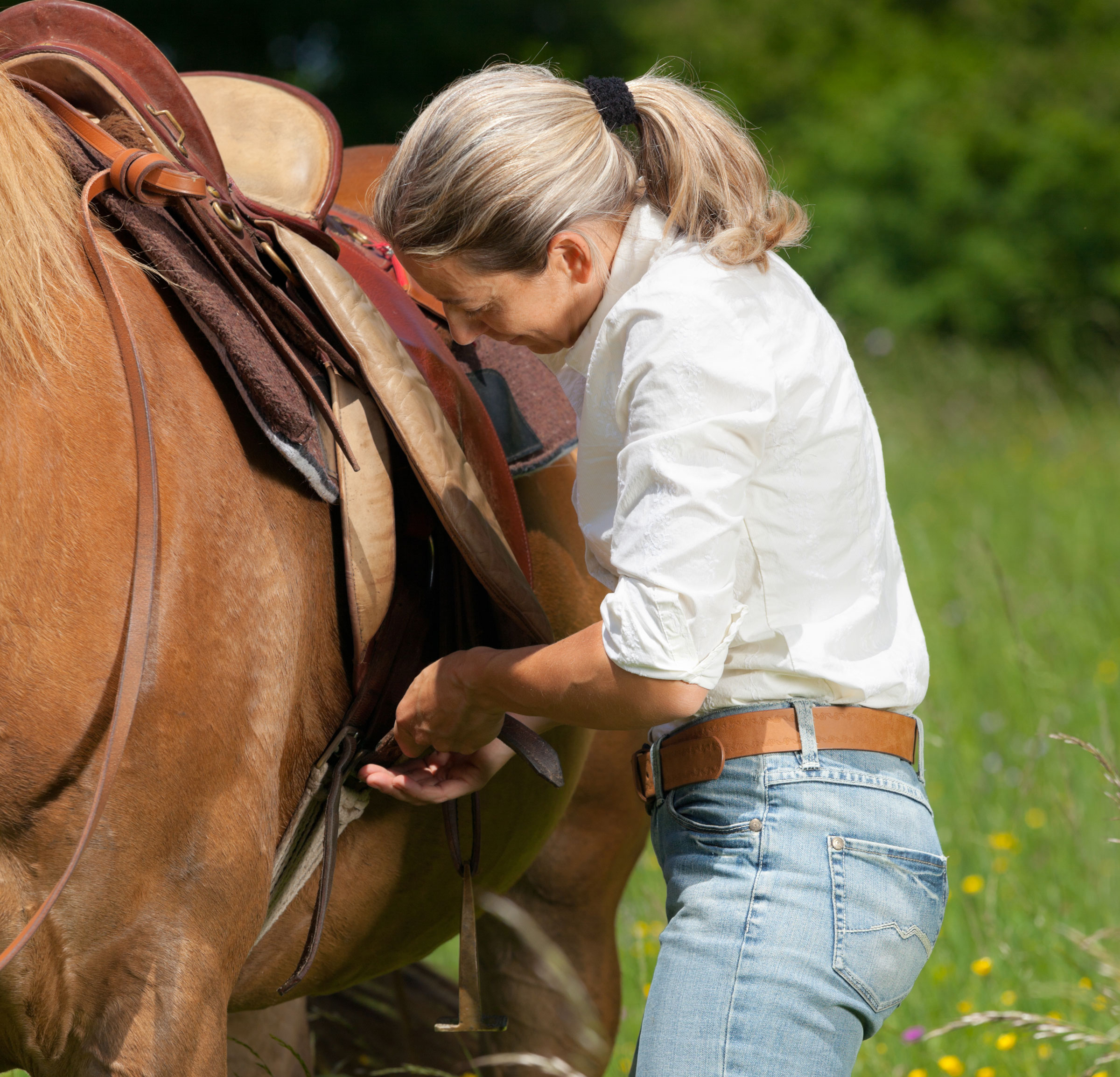
In many cases, horses of any age become fat because they are offered too many groceries with too little exercise. In other cases, the horse might have a metabolic issue, such as PPID or equine metabolic syndrome (EMS), that makes him or her overly efficient at using calories provided by concentrate feeds or other supplements. Some horses simply can’t exercise due to on-going musculoskeletal issues or laminitis.
In every case, obesity is dangerous to horse health, so efforts need to be made to curtail a horse’s caloric intake. A fat horse should not be turned out on pasture, or at the very least, he should wear a grazing muzzle. Close the bottom hole of the muzzle even further using Gorilla tape so the horse has more difficulty obtaining blades of grass but retain enough of an opening for him to drink and for water to drain out the bottom of the muzzle. Turn horses out in the early morning hours to reduce intake of fructans and non-structural carbohydrates (NSC) that are generated in the stems of plants during daylight hours of photosynthesis.
Eliminate grain, complete feed, and fat supplements from the diet except when necessary to provide a ration balancer for vitamins, minerals and protein. Use low-NSC products designed for weight-challenged individuals and senior horses.
Weight loss objectives take time and are best if done gradually over months. Target a weight loss of 1% of a horse’s weight goal each week. For example, if your horse should weigh 1,000 pounds, then each week, you’ll want him to lose 10 pounds. If he is 100 pounds overweight, it’ll take 10 weeks to reach the desired weight. Consult with your veterinarian for the best-tailored regimen.
- Offer feeds high in fiber but lower in quality, as for example switch from alfalfa hay to grass or oat hay.
- Feed no more hay than 1.5% of the target body weight; i.e., a 1,000-pound horse is fed 15 pounds of hay per day, split into several feedings. To reach this target weight, reduce his original ration by 10% every week. Use a scale to weigh the hay. Some very obese individuals might need food pared down to 1.25% of target body weight.
- Spread the hay ration around the pasture or enclosure so the horse has to walk more to access his feed.
- Feed an obese horse separate from others so there is no chance he’ll eat more than his ration.
- Exercise the horse as much as reasonable for that individual relative to the horse’s level of fitness, athletic ability, and soundness.
- Monitor your horse’s weight with a weight tape and body condition scoring every 2-4 weeks. Remember that weight loss is a gradual process.


